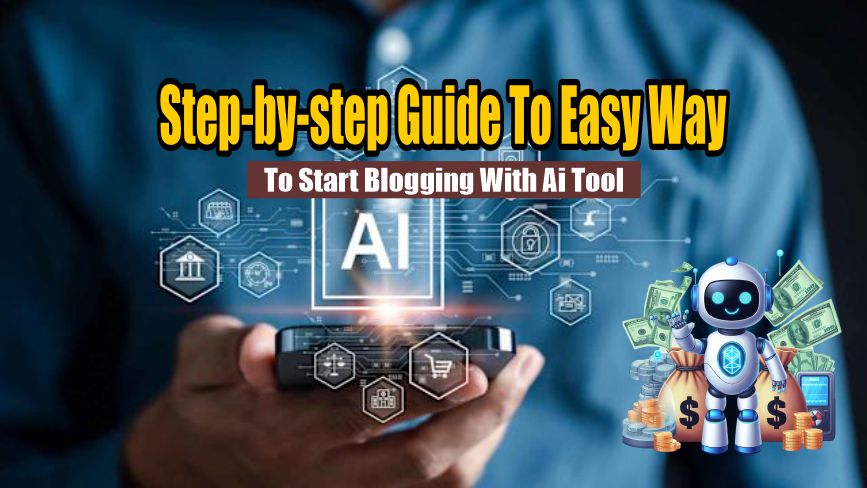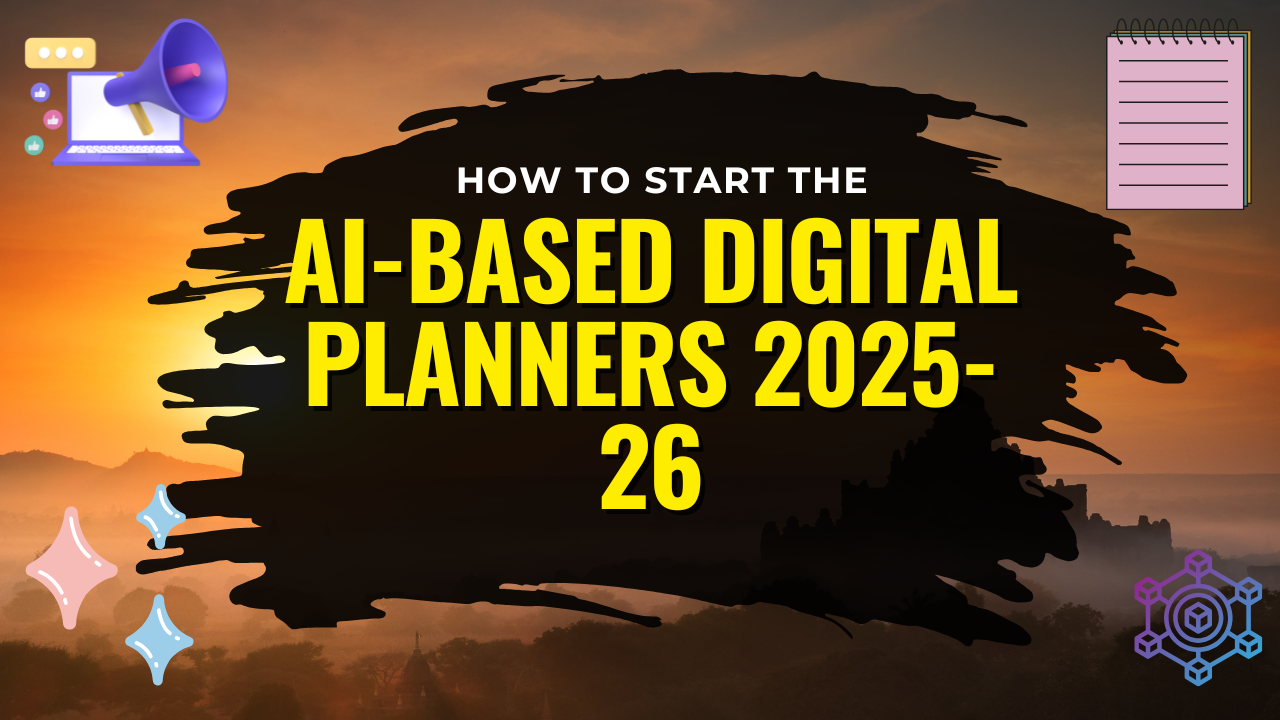
Step-by-Step Guide to Easy way to start blogging with Ai tool
Introduction
Today i am going to tell you “using ai to write a blog“Ready to stop thinking about blogging and finally start? Let’s dive into the surprisingly easy way to create content you’re proud of, powered by AI.

Why AI is Your Secret Weapon for Blogging
Let’s cut to the chase. Starting a blog is hard. The biggest hurdle isn’t the setup; it’s the sheer terror of that blank page. You have ideas, but getting them out in a coherent, engaging way? That’s where most dreams die. AI blogging tools are the ultimate game-changer because they don’t just help you write; they transform your entire approach to content creation. Think of them as your always-on, infinitely patient brainstorming partner and first-draft writer. They handle the laborious, time-consuming part of structuring thoughts and getting words on the page. This frees up your mental energy for what truly matters: injecting your unique personality, expertise, and strategic thinking. I used to dread writing. Now, I see it as a collaborative process. The AI gives me the clay, and I get to be the sculptor. It’s made blogging fun again, and honestly, it’s the only reason I can publish consistently. If you’re serious about blogging, using AI isn’t cheating; it’s just smart strategy.
Shattering Writer’s Block for Good
Writer’s block isn’t a myth; it’s a real creative paralysis. You sit there, the cursor blinking mockingly, and your brain feels utterly empty. It’s frustrating and a massive waste of time. AI is the ultimate cure for this. Instead of facing the void alone, you start a conversation. You type a simple prompt like, “Give me a blog intro paragraph about starting a keto diet for beginners who love pasta.” In seconds, you have a starting point. It might not be perfect, but it breaks the ice. That initial momentum is priceless. The AI provides a structure, a few ideas, a direction—something, anything, to react to and build upon. It’s like having a friend toss you a ball; now you just have to throw it back. This process eliminates the pressure of creation from nothing. You’re no longer a writer staring into an abyss; you’re an editor with a rough draft. And editing is always, always easier than writing from scratch.
The Unbeatable Speed of AI Content Creation
Time is the currency of the digital age, and AI is a high-frequency trader. The traditional blogging workflow is a slog: research (1 hour), outline (30 mins), draft (2 hours), edit (1 hour). That’s a 4.5-hour commitment for a single post! An AI-powered workflow smashes this timeline. Here’s a real example from my process last week: I needed a post on “best project management tools for remote teams.” I prompted the AI with a detailed request. In under three minutes, I had a comprehensive 800-word draft. Was it ready to publish? Absolutely not. But it was a solid foundation. I then spent 20 minutes personalizing it with my own experiences using Asana and Trello, adding a client story, and tightening the language. From idea to polished post in under 30 minutes. This speed is a legitimate superpower. It allows you to respond to trends quickly, build a content library fast, and maintain a consistent publishing schedule without burning out. Consistency is what builds an audience, and AI is the tool that makes consistency achievable.
Picking the Perfect AI Tool for Your Needs
The market is flooded with AI writing tools, and the choice can be overwhelming. It’s easy to fall into “analysis paralysis,” trying to find the one perfect option. Here’s my hot take: the best AI tool is the one you can afford and will actually use. Don’t get bogged down. Most of the top-tier options offer free trials or generous free plans. Your goal should be to test a couple and see which interface and output vibe with you. It’s a deeply personal choice, like picking a new laptop. Some people swear by MacBooks, others are die-hard Windows fans. Neither is objectively wrong; it’s about fit. I’ve tested nearly all of them, from the big names to obscure browser extensions. The key differentiators usually come down to a few specific features and the overall “feel” of the writing. Start simple, learn one tool inside and out, and then you can explore others later. The tool is just a means to an end—great content.
Top Contenders: A Look at Jasper, Copy.ai, and ChatGPT
For beginners in 2024, three tools stand out for their balance of power and usability:
- Jasper: This is the industry veteran, and for good reason. It’s built specifically for marketers and bloggers. Its “Boss Mode” is fantastic for long-form content, and it offers a ton of templates (blog outlines, Facebook ads, etc.) that streamline creation. The learning curve is minimal. The downside? It’s probably the most expensive option on this list, but you’re paying for a specialized, refined experience. https://www.jasper.ai/
- Copy.ai: This is my top recommendation for someone who wants to test the waters without opening their wallet. Its free plan is incredibly robust. The workflow is intuitive, and it excels at generating multiple creative variants for headlines and intros. It feels less like a word processor and more like an idea generator, which is a great place to start. https://www.copy.ai/
- ChatGPT (Plus): The free version of ChatGPT is fun, but the paid version ($20/month for GPT-4 Turbo) is a serious blogging workhorse. Its raw intelligence and ability to follow complex, conversational instructions are unmatched. The lack of built-in SEO features is a drawback, but its versatility and knowledge make it a powerhouse for research and drafting. It’s the Swiss Army knife of AI tools. https://chatgpt.com/

My advice? Try Copy.ai‘s free plan and ChatGPT Plus. If you need more structure, then consider Jasper.
Must-Have Features: More Than Just a Text Generator
When you’re kicking the tires on these tools, don’t just judge them on the fluency of their output. Look for these critical features that transform them from novelties into professional power tools:
- Long-Form Editor & Content Memory: This is essential. You need a dedicated writing environment where the AI remembers what it said three paragraphs ago. Tools that can only generate 200-word snippets are useless for serious blogging.
- SEO Integrations: Some tools, like Jasper, offer built-in SEO suggestion features (like SurferSEO integration). Others, like Frase, are built around it. This is a massive time-saver, helping you naturally include keywords and structure posts for Google. If your tool doesn’t help with SEO, you’re only solving half the problem.
- Brand Voice/Tone Customization: Can you teach the AI to sound like you? Can you feed it a few samples of your writing so its output mimics your style? This is a premium feature but is crucial for scaling your content without losing your unique voice.
- Web Access (Grounding): Does the tool have access to current Google data? This prevents the AI from hallucinating outdated or incorrect facts, a common issue with base-level models. For instance, you want a post about the “best VR headsets in 2024” to mention the Apple Vision Pro, not just models from 2022.
Prioritize tools that offer these features. They move the AI from being a simple parlor trick to being a genuine member of your content team.
Your 5-Step Blueprint to an AI-Powered Blog Post
Okay, you’ve got your tool. Now what? Throwing random prompts at the AI and hoping for a masterpiece is a recipe for generic, mediocre content. You need a system. This 5-step blueprint is the exact process I use for my own blog and for client work. It’s methodical, effective, and ensures the final product is high-quality and authentically yours. The goal here isn’t to remove you from the process; it’s to position you as the director, not the struggling actor trying to remember all their lines. You’re guiding the AI, making strategic decisions, and applying the final polish. This framework turns a daunting task into a simple, repeatable assembly line for fantastic content. Let’s break it down.
Laser-Focus on Your Topic and Audience
You can’t prompt an AI effectively if you don’t know what you’re aiming for. Garbage in, garbage out, as they say. Before you even open your AI tool, grab a notepad. Ask yourself two questions: “What specific question am I answering?” and “Who am I answering it for?”.
Vague topic: “Blogging.”
Focused topic: “A guide for small bakery owners in Chicago on using a blog to attract more local customers for custom cakes.”
See the difference? The second one has a clear audience (bakery owners), a location (Chicago), and a specific goal (attract customers for custom cakes). This focus will inform every single prompt you write next. It tells the AI exactly what to research and how to frame the language. Are you writing for seasoned experts or total newbies? The tone will change dramatically. I always spend five minutes on this step. It’s the most important investment you’ll make. Without it, your AI-generated post will be a generic article that exists nowhere for no one.
The Art of the Perfect AI Prompt
This is where the magic happens. A bad prompt gets you a bad draft. A great prompt gets you 80% of the way to a finished post. Don’t just say “write a blog post about keto.” That’s lazy and you’ll get a generic mess. Instead, use a prompt formula. I use the RACE framework:
- Role: “Act as an expert digital marketing consultant for small businesses.”
- Action: “Write a comprehensive outline for a 1000-word blog post.”
- Context: “The topic is ‘5 Budget-Friendly SEO Strategies for Local Landscapers.’ The audience is landscaping company owners with minimal tech skills.”
- Examples: “Structure the outline with an H2 for each strategy, and include brief bullet points on key takeaways. Use a friendly and encouraging tone.”
See how detailed that is? You’ve given the AI a persona, a task, background information, and a format. The result will be infinitely more usable. Start with an outline prompt first. Once you have a solid structure, you can then prompt the AI to “expand on point #3” to write the full section. This chunking method gives you more control.
The Human Touch – Editing is Everything
This is the non-negotiable step. Never, ever publish the raw output from an AI. I don’t care how good it looks. Your job now is to become an editor. Read through the entire draft and make it yours.
- Add Stories and Anecdotes: Where can you insert a personal story? For the landscaping post, maybe talk about a local landscaper you saw using QR codes on his yard signs brilliantly.
- Inject Opinions and Personality: Does the AI make a claim you disagree with? Change it! Add phrases like “In my experience…” or “Here’s the thing most guides won’t tell you…”
- Fact-Check Everything: AI is notorious for “hallucinating” facts, stats, and even fake URLs. I once caught it citing a study that never existed. Verify every number and claim.
- Tighten the Language: AI can be wordy and repetitive. Cut the fluff. Rewrite awkward sentences. Make it punchy and engaging.
This editing phase is what separates professional, valuable content from spammy AI garbage. It’s where you earn your keep. - Simple SEO Tricks to Get Found

What’s the point of a great blog post if no one can find it? You need to optimize for search engines. This sounds technical, but it can be simple.
- Keyword: You should have already chosen a primary keyword based on your focused topic (e.g., “budget-friendly seo for landscapers”).
- Title & URL: Ensure your primary keyword is in your H1 title and your post’s URL slug.
- Headings: Use your keyword naturally in an H2 or H3 heading.
- Meta Description: Write a compelling 155-character summary that includes the keyword. This is the blurb that shows up on Google. Most AI tools can generate this for you if you ask!
- Internal Linking: Link to another relevant post on your own blog. This keeps people on your site.
You don’t need to be an SEO guru. Just covering these basics will put you miles ahead of most amateur bloggers. Tools like Yoast SEO (for WordPress) can guide you through this process easily.
Hitting Publish and Learning from Data
Your work isn’t done when you hit “publish.” That’s when it begins. Now, you need to see how your AI-assisted masterpiece performs. Open Google Analytics (it’s free) and look at the data for your new post.
- Is it getting traffic?
- What are the “top sources” of that traffic? (Google, social media, etc.)
- What is the “average engagement time”? Are people actually reading it?
This data is pure gold. It tells you what’s working and what’s not. Maybe posts with “step-by-step” in the title perform better. Maybe your audience prefers listicles. Use these insights to inform your next topic choice and your next AI prompt. This creates a virtuous cycle: AI helps you create more content faster, and analytics helps you make that content better and more targeted. It’s a feedback loop that leads to guaranteed growth.
Navigating the Pitfalls: Smart AI Blogging
AI is a powerful tool, but like any tool, it can be misused. I’ve seen too many bloggers get excited and then make classic mistakes that actually hurt their credibility and their search rankings. The key is to approach AI with a strategy, not just blind enthusiasm. It’s about working smarter, not lazier. Understanding these pitfalls upfront will save you from a world of headaches later. Think of this as learning the rules of the road before you get behind the wheel of a sports car. You have the power; now you need the responsibility to wield it correctly. Let’s talk about the two biggest mistakes I see and how you can easily avoid them.
The #1 Mistake: Publishing Raw AI Output
This is the biggest, most common, and most damaging error. You run a prompt, get a 1000-word article, and immediately copy-paste it into your blog. Stop. Just stop. Raw AI output has telltale signs: a certain generic fluency, a lack of deep insight, sometimes a overly formal or repetitive tone, and occasionally, outright factual errors. Google has explicitly stated that its focus is on “helpful content created for people,” and its algorithms are getting scarily good at detecting unoriginal, low-value AI content. Publishing this stuff is a great way to never rank on Google. More importantly, it does a disservice to your readers. They came to hear from you, not a robot. The AI draft is your raw material, not your final product. Your value is added in the editing room, as we discussed in Step 3.
Keeping It Real: Why Your Voice is Non-Negotiable
The second biggest mistake is letting the AI erase your unique voice and perspective. Your voice is your superpower. It’s what makes your blog different from every other blog in your niche. AI, left to its own devices, will produce a kind of “average” of all the writing it’s been trained on. It defaults to the middle of the road. Your job is to swerve off that road! This means consciously editing for tone. Read your draft out loud. Does it sound like you? Would you actually say that sentence to a friend? Infuse your humor, your quirks, your specific opinions, and your real-life experiences. Did you try a strategy that failed? Talk about it! That human vulnerability is something AI can never fake and is infinitely more valuable than a perfectly written but soul-less article. Your audience connects with you, not with a perfectly structured sentence. Never outsource your personality.



